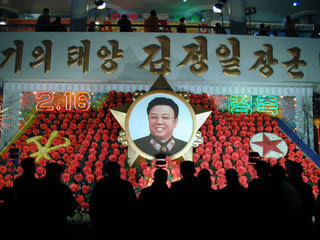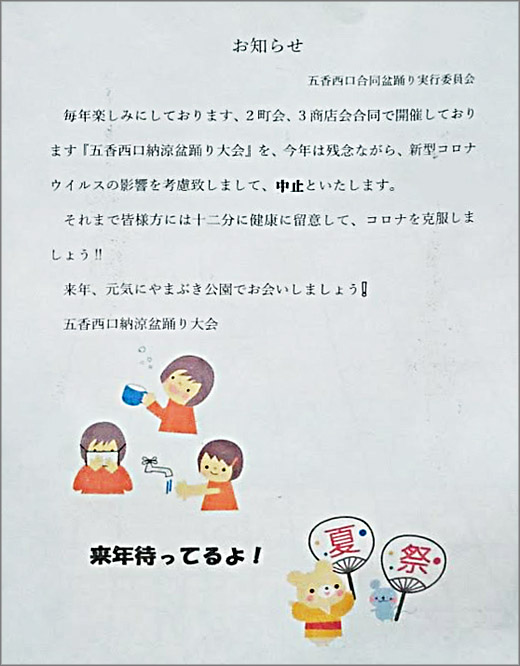全文転載です
http://yh649490005.xsrv.jp/public_html/2016/02/09/447%E3%80%80%E3%82%AF%E3%83%9F%E3%83%88%E3%83%BC%E3%83%93%E3%83%B3%E6%AE%BF%E3%81%B8%E3%81%AE%E3%83%A1%E3%83%83%E3%82%BB%E3%83%BC%E3%82%B8%E2%91%A6/
↓
447 クミトービン殿へのメッセージ⑦
シーモア
きさめに
余命翁様
この度の更新を待ちわびておりました。何事もなかったようですので、とにかく良かったです。反面貴記事の更新に依存しているなと未更新の間強く感じた次第です。どうかお気をつけください。
慰安婦というものはそもそも存在しない。
これらは日本を貶めようとしている存在によって巧みに作られ、金銭を得る材料としてそれらを日本のマスコミを使って大々的に広められたのである。
もともと大日本帝国軍(以下日本軍)は慰安婦の強制連行などしておらず、女衒といわれる人身売買ブローカーと当時貧しかった家庭を利用し、売春婦として組織したものである。当時の売春婦は高額な報酬を得て本国に送金している。
戦場という特殊な場において身売りされた女性が売春行為をしただけであり、同様のことは第二次世界大戦の日本軍意外にも朝鮮戦争、ベトナム戦争時にも起きており、このような人身売買的な売春環境は21世紀に入っても続いている。
都民
カリフォルニア州教育委員会にメールする際、以下の日本語とその英訳をご自由にお使い下さい。文法的に間違った部分があれば、修正もよろしくお願いします。
そして元慰安婦たちの話は、彼女たちが話すたびに話が変わるので、確かな証拠がない。信憑性がないのである。
これに反して、米国陸軍による慰安婦に関する調査書がある。もし慰安婦たちが日本軍による被害者だったなら、彼女たちは、スケジュールが密だったので全ての客を相手にできなくて残念だと文句を言わなかったはずだ!!慰安婦たちは、もっとたくさんお金が欲しかったわけでしょ?詳細は、後に述べる。
South Korea says, ” Comfort women were forced into prostitution as sexual slavery by the Japanese military during the World WarⅡ.” But the Japanese government can’t find any evidence of it. The above Korean assertion is based on only EX-comfort women’s verbal statements. And EX-comfort women’s story doesn’t have any conclusive evidence, as every time they speak, the story differs. It’s unreliable.
On the other hand, we have the report drawn up on comfort women by U.S. Army Forces. If these comfort women had been victims of Japanese military, they wouldn’t have complained of not being able to care for all guests, due to a tight schedule!! They wanted much more money, right? The details will be reported later.
以下に、インド・ビルマ戦域アメリカ陸軍所属のアメリカ戦時情報局心理作戦班による慰安婦に関する報告書の一部を掲載する。
The following is the official report by Psychological Warfare Team of OFFICE OF WAR INFORMATION Attached to U.S. Army Forces India-Burma Theater;
前書
この報告は、1944年8月10日ごろ、ビルマのミッチナ陥落後の掃討作戦において捕らえられた20名の朝鮮人「慰安婦」と2名の日本の民間人に対する尋問から得た情報に基づくものである。この報告は、これら朝鮮人「慰安婦」を募集するために日本軍が用いた方法、慰安婦の生活および労働の条件、日本軍兵士に対する慰安婦の関係と反応、軍事情勢についての慰安婦の理解程度を示している。
PREFACE
This report is based on the information obtained from the interrogation of twenty Korean “comfort girls” and two Japanese civilians captured around the tenth of August, 1944 in the mopping up operations after the fall of Myitkyina in Burma.The report shows how the Japanese recruited these Korean “comfort girls”, the conditions under which they lived and worked, their relations with and reaction to the Japanese soldier, and their understanding of the military situation.
性 質
尋問により判明したところでは、平均的な朝鮮人慰安婦は25歳くらいで、無教育、幼稚、気まぐれ、そして、わがままである。
慰安婦は、日本的基準から いっても白人的基準からいっても、美人ではない。 とかく自己中心的で、自分のことばかり話したがる。見知らぬ人の前では、もの静かでとりすました態度を見せるが、「女の手練手管を心得ている」。自分の 「職業」が嫌いだといっており、仕事のことについても家族のことについても話したがらない。捕虜としてミッチナやレドのアメリカ兵から親切な扱いを受けたために、アメリカ兵のほうが日本兵よりも人情深いと感じている。慰安婦は中国兵とインド兵を怖がっている。
PERSONALITY
The interrogations show the average Korean “comfort girl” to be about twenty-five years old, uneducated, childish, and selfish. She is not pretty either by Japanese of Caucasian standards. She is inclined to be egotistical and likes to talk about herself. Her attitude in front of strangers is quiet and demure, but she “knows the wiles of a woman.” She claims to dislike her “profession” and would rather not talk either about it or her family. Because of the kind treatment she received as a prisoner from American soldiers at Myitkyina and Ledo, she feels that they are more emotional than Japanese soldiers. She is afraid of Chinese and Indian troops.
生活および労働の環境
ミッチナ駐屯部隊では慰安婦たちは、通常、個室のある二階建ての大規模家屋(普通は学校の校舎)に宿泊していた。それぞれの慰安婦は、そこで寝起きし、業を営んだ。彼女たちは、日本軍から一定の食料を買っていた。
この点はビルマ生活2年目についてとくにいえることであった。食料・物資の配給量は多くなかったが、欲しい物品を購入するお金はたっぷりもらっていたので、彼女たちの 暮らし向きはよかった。彼女たちは、故郷から慰問袋をもらった兵士がくれるいろいろな贈り物に加えて、それを補う衣類、靴、紙巻きタバコ、化粧品を買うことができた。
彼女たちは、ビルマ滞在中、将兵と一緒にスポーツ行事に参加して楽しく過ごし、また、ピクニック、演奏会、夕食会に出席した。彼女たちは蓄音機をもっていたし、都会では買い物に出かけることが許された
LIVING AND WORKING CONDITIONS
In Myitkyina the girls were usually quartered in a large two story house (usually a school building) with a separate room for each girl. There each girl lived, slept, and transacted business. In Myitkina their food was prepared by and purchased from the “house master”as they received no regular ration from the Japanese Army. They lived in near-luxury in Burma in comparison to other places. This was especially true of their second year in Burma. They lived well because their food and material was not heavily rationed and they had plenty of money with which to purchase desired articles. They were able to buy cloth, shoes, cigarettes, and cosmetics to supplement the many gifts given to them by soldiers who had received “comfort bags” from home.
While in Burma they amused themselves by participating in sports events with both officers and men, and attended picnics, entertainments, and social dinners. They had a phonograph and in the towns they were allowed to go shopping.
優先順位料金等
慰安婦の営業条件は軍によって規制され、慰安所の利用どの高い地域では、規則は厳格に実施された。利用度の高い地域では、軍は料金、利用優先順位、および 特定地域で作戦を実施している各部隊のための利用時間割り当て制を設ける必要があると考えた。尋問によれば普通の料金は次のとおりであった
1.兵 午前10時~午後5時 1.5円20~30分
2.下士官 午後5時~午後9時 3円30分~40分
3.将校 午後9時~午後12時5円30分~40分
(三食食事付きの家政婦の月収が約13円の時代なので、慰安婦は高給取りであったことがわかる)
PRIOR SYSTEM
The conditions under which they transacted business were regulated by the Army, and in congested areas regulations were strictly enforced. The Army found it necessary in congested areas to install a system of prices, priorities, and schedules for the various units operating in a particular areas. According to interrogations the average system was as follows:
1.Soldiers 10AM to 5PM 1.50yen 20 to 30 minutes
2.NCOs 5PM to 9PM 3.00yen 30 to 40 minutes
3.Officers 9PM to12PM 5.00yen 30 to 40 minutes
利用日割り当て表
兵士たちは、慰安所が混んでいるとしばしば不満を訴えた。規定時間外利用については、軍がきわめて厳しい態度をとっていたので、多くの場合、彼らは用を足さずに引き揚げなければならなかった。この問題を解決するため、軍は各部隊のために特定日を設けた。(中略)
将校は週に夜7回利用することが認められていた。慰安婦たちは、日割表どおりでも利用度がきわめて高いので、すべての客を相手にすることはできず、その結果、多くの兵士の間に険悪な感情を生みだすことになるとの不満をもらしていた。
兵士たちは慰安所にやって来て、料金を支払い、厚紙でこしらえた約2インチ四方の利用券を買ったが、それには左側に料金額、右側に慰安所の名称が書かれて いた。次に、それぞれの兵士の所属と階級が確認され、そののちに兵士は「列をつくって順番を待った」。慰安婦は接客を断る権利を認められていた。接客拒否 は、客が泥酔している場合にしばしば起こることであった。
SCHEDULES
The soldiers often complained about congestion in the houses. In many situations they were not served and had to leave as the army was very strict about overstaying. In order to overcome this problem the Army set aside certain days for certain units. Usually two men from the unit for the day were stationed at the house to identify soldiers. A roving MP was also on hand to keep order. Following is the schedule used by the “Kyoei” house for the various units of the 18th Division while at Naymyo.
Officers were allowed to come seven nights a week. The girls complained that even with the schedule congestion was so great that they could not care for all guests, thus causing ill feeling among many of the soldiers.
Soldiers would come to the house, pay the price and get tickets of cardboard about two inches square with the prior on the left side and the name of the house on the other side. Each soldier’s identity or rank was then established after which he “took his turn in line”. The girls were allowed the prerogative of refusing a customer. This was often done if the person were too drunk.
報酬および生活状態
「慰安所の楼主」は、それぞれの慰安婦 が、契約を結んだ時点でどの程度の債務額を負っていたかによって差はあるものの、慰安婦の稼ぎの総額の50ないし60パーセントを受け取っていた。これは、慰安婦が普通の月で総額1500円程度の稼ぎを得ていたことを意味する。慰安婦は、「楼主」に750円を渡していたのである。多くの「楼主」は、食料、その他の物品の代金として慰安婦たちに多額の請求をしていたため、彼女たちは生活困難に陥った。
1943年の後期に、軍は、借金を返済し終わった特定の慰安婦には帰国を認める胸の指示を出した。その結果、一部の慰安婦は朝鮮に帰ることを許された。
さらにまた、尋問が明らかにしているところによれば、これらの慰安婦の健康状態は良好であった。
日本軍の正規の軍医が慰安所を週に一度訪れたが、罹患していると認められた慰安婦はすべて処置を施され、隔離されたのち、最終的には病院に送られた。軍そのものの中でも、まったく同じ処置が施されたが、興味深いこととしては、兵士は入院してもその期間の給与をもらえなくなることはなかったという点が注目される。
PAY AND LIVING CONDITIONS
The “house master” received fifty to sixty per cent of the girls’ gross earnings depending on how much of a debt each girl had incurred when she signed her contract. This meant that in an average month a girl would gross about fifteen hundred yen. She turned over seven hundred and fifty to the “master”. Many “masters” made life very difficult for the girls by charging them high prices for food and other articles.
In the latter part of 1943 the Army issued orders that certain girls who had paid their debt could return home. Some of the girls were thus allowed to return to Korea.
The interrogations further show that the health of these girls was good. They were well supplied with all types of contraceptives, and often soldiers would bring their own which had been supplied by the army. They were well trained in looking after both themselves and customers in the matter of hygiene. A regular Japanese Army doctor visited the houses once a week and any girl found diseased was given treatment, secluded, and eventually sent to a hospital. This same procedure was carried on within the ranks of the Army itself, but it is interesting to note that a soldier did not lose pay during the period he was confined.
兵士たちの反応
慰安婦の一人によれば、平均的な日本軍人は、「慰安所」にいる ところを見られるのをきまり悪がり、彼女が言うには、「慰安所が大入り満員で、並んで順番を待たなければならない場合には、たいてい恥ずかしがる」そうである。しかし、結婚申し込みの事例はたくさんあり、実際に結婚が成立した例もいくつかあった。
すべての慰安婦の一致した意見では、彼女たちのところへやって来る将校と兵士のなかで最も始末が悪いのは、酒に酔っていて、しかも、翌日戦前に向かうことになっている連中であった。しかし、同様に彼女たちが口を揃えて言うには、日本の軍人は、たとえどんなに酔っていても、彼女たちを相手にして軍事にかかわる事柄や秘密について話すことは決してなかった慰安婦たちが何か軍事上の事柄についての話を始めても、将校も下士官や兵士もしゃべろうとしないどころか、「そのような、女にふさわしくないことを話題にするな、といつも叱ったし、そのような事柄については丸山大佐でさえ、酒に酔っているときでも決して話さなかった」
しばしば兵士たちは、故郷からの雑誌、手紙、新聞を受け取るのがどれほど楽しみであるかを語った。彼らは、缶詰、雑誌、石鹸、ハンカチーフ、歯ブラシ、小さな人形、口紅、下駄などが いっぱい入った「慰問袋」を受け取ったという話もした。口紅や下駄は、どう考えても女性向きのものであり、慰安婦たちには、故郷の人びとがなぜそのような 品物を送ってくるのか理解できなかった。彼女たちは、送り主にしてみれば、自分自身つまり「本来の女性」を心に描くことしかできなかったのであろうと推測した。
SOLDIERS REACTIONS
The average Japanese soldier is embarrassed about being seen in a “comfort house” according to one of the girls who said, “when the place is packed he is apt to be ashamed if he has to wait in line for his turn”. However there were numerous instances of proposals of marriage and in certain cases marriages actually took place.
All the girls agreed that the worst officers and men who came to see them were those who were drunk and leaving for the front the following day. But all likewise agreed that even though very drunk the Japanese soldier never discussed military matters or secrets with them. Though the girls might start the conversation about some military matter the officer or enlisted man would not talk, but would in fact “scold us for discussing such un-lady like subjects. Even Col. Maruyama when drunk would never discuss such matters.”
The soldiers would often express how much they enjoyed receiving magazines, letters and newspapers from home. They also mentioned the receipt of “comfort bags” filled with canned goods, magazines, soap, handkerchiefs, toothbrush, miniature doll, lipstick, and wooden clothes. The lipstick and cloths were feminine and the girls couldn’t understand why the people at home were sending such articles. They speculated that the sender could only have had themselves or the “native girls”.
いつから韓国の元慰安婦たちが、補償しろと要求するようになったのか?1977年、吉田清冶という日本人が、済州島で自ら200人慰安婦狩りをしたという捏造本を出版。1989年本はハングルに訳され、韓国で広まった。
吉田の記述は済州島の城山浦にある貝ボタン工場という設定で、韓国でこの本が出版された後、済州新聞記者の許栄善が現地で多くの人々の話を聞いて調査した。しかし、彼女は強制連行の証拠を見つけることができなかった。
「250戸しかないこの村で、200人の若い女性が日本人に強制連行されたって?たとえ15人でも徴用されたとすれば大事件だが、そんな話は聞いたことがない」と語った。
しかし彼の捏造話は既に1983年から朝日新聞によって大きく報じられた。そして、多くの元慰安婦たちが補償を求め始めた。
When did Korean ex-comfort women start demanding compensation? In 1977, a Japanese man named Seiji Yoshida wrote a book which said that 200 local women were abducted by Japanese on Jeju-Island in Korea. He claimed he was one of the abductors. In 1989, his book was translated into Hangeul, or Korean language, and then the story was disseminated in South Korea. After the publication of the book in South Korea, 許栄善who was a Korean reporter for The Seju-Island newspaper interviewed many local people there. But she couldn’t get any evidence of abduction.
The local Korean lady who was 85 years old said, “There are only 250 houses here. Were 200 young ladies abducted by Japanese? If only15 people had been commandeered, it would have been a serious incident, but I haven’t heard such a story.”
Also in 1989, 金奉玉 who was a Korean historian said, “After researching into Yoshida’s story for a long time, I have come to the conclusion that Yoshida’s story is false, not true. Yoshida wrote the false story, as he was very business-minded, and wanted to earn money.” But his false story has been spread by The Asahi newspaper since 1983. And EX-comfort women started to ask for compensation.
実際は、1965年の日本国と大韓民国との間の基本関係に関する条約により、財産、権利及び利益並びに両締約国及びその国民の間の請求権に関する問題が完全かつ最終的に解決されているのである(個別請求権の問題解決)。
As a matter of fact, in 1965, Japan-Korea Peace Treaty ended the possibility of future claims against Japan. Moreover, this meant any sort of claim, including unpaid wages of any profession during the days of colonization.
2003年の韓国政府女性家族部の調査によると、500,000人の女性が韓国の性産業で働いており、韓国フェミニスト協会によると実際の数は百万人を超えたかもしれないとのこと。その数が事実に近いなら、韓国女性の25人に1人が売春していたことになる。韓国政府は2004年、売春婦防止法を制定した。その結果、海外で売春したり、海外を行き来する韓国人売春婦の数が増加した。
2013年、韓国には約270,000人の売春婦がいる。
In 2003, The South Korean government’s Ministry fot Gender Equality estimated that 500,000 women worked in the national sex industry, though,according to the Korean feminist Association,the actual number might exeed 1 million. If that estimate is closer to the trouth, it would mean 1 out of every 25 women in the country is selling her body for sex. South Korean government established the Antiprostitution Law in 2004. As a result, the number of Korean women looking for work as prostitutes abroad or being trafficked for the purpose is on the increase. Destinations for Korean sex workers are no longer limited to developed nations like the U.S., Canada, Australia and Japan. Korean police say
the number of Korean women working in bars, karaoke clubs and massage parlors in countries like Thailand, Vietnam, Uzbekistan and Kazakhstan is increasing. In2013, there’re about 270,000 prostitutes in South Korea.
韓国人は、女性を尊敬しているのではなく、ただお金が欲しいのだ。もしそうでないなら、ベトナムにライダイハン問題について直ちに謝罪し、補償するべきだ!
By the way, the term Lai Daihan means a mixed ancestry person born to a South Korean father and a Vietnamese mother, and the fathers include both members of the South Korean military and Korean workers who were stationed in Vietnam during the Vietnam War. The exact number of Lai Daihan is unknown, but it is said that there are at least 5,000 and 30,000 at most. The South Korean military had massacred more than 300,000 Vietnamese people, in Vietnam during the War. During the war, South Koreans abducted and raped large numbers of Vietnamese women. Thus, the Lai Daihan problem includes, rape, and the desertion of the children. But Korea has’t apologized to Vietnam for the Lai Daihan problem yet. It’s not that Korean people respect women, but that they just want money. If it isn’t so, Korea should apologize to Vietna for the Lai Daihan problem, and should compensate immediately!
とてもわかりやすく、これ以上説明のしようがない内容です(^^)
この事実が広く拡散され世界中の人々へと周知されることを強く希望します



















